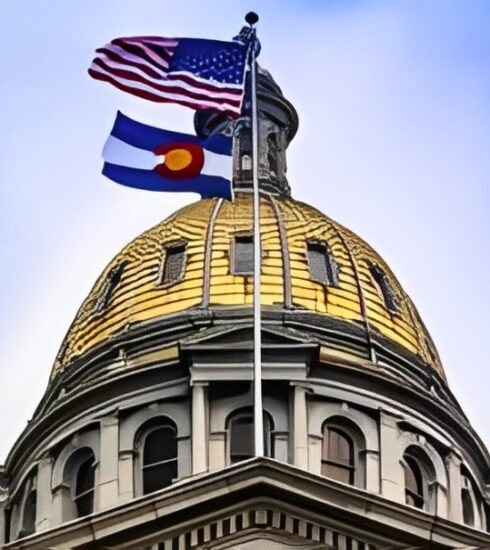Forty-five years after allowing America’s universities to give limited consideration to race in admissions, the US Supreme Court at the end of June ruled that race can no longer be considered as a factor in university admissions. Just to be clear and to put things in perspective, affirmative action as a whole has not been eradicated – it’s just the race part that the court is scrapping.
Affirmative action has always been divisive. But two recent cases involving Harvard and the University of North Carolina (UNC) are what finally killed it.
The result in Students for Fair Admissions v Harvard (consolidated with Students for Fair Admissions v University of North Carolina) was no surprise. Affirmative action has been hanging by a thread for decades, with race-conscious admissions surviving by one-vote margins in Regents of University of California v Bakke in 1978, Grutter v Bollinger in 2003 and Fisher v University of Texas in 2016.
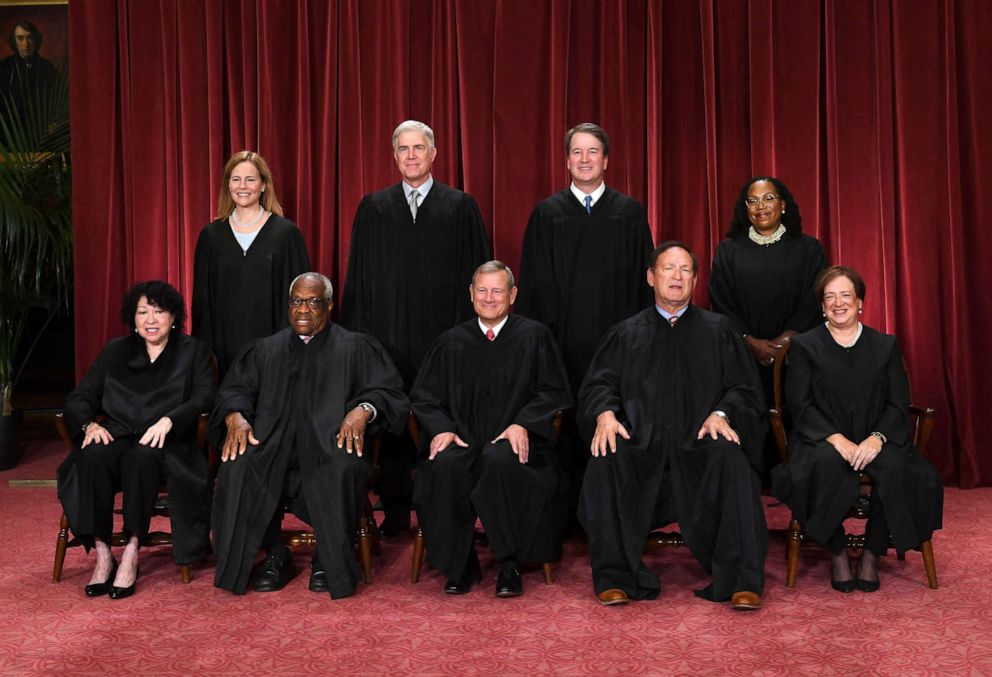
US Supreme Court Justices. Credit: Washington Post
When a six-justice conservative majority that was deeply skeptical of using racial criteria took shape in 2020, the demise of affirmative action seemed all but inevitable.
The court ruled against both universities, siding with Students for Fair Admissions, who argued that race-conscious admissions at American universities constituted a violation of Title VI of the 1964 Civil Rights Act – the part that bars discrimination based on race, colour or national origin.
It’s quite apparent why the racial portion of affirmative action is important. It wasn’t until the mid-1950s that school segregation was finally outlawed (on paper at least). But contrary to popular belief, affirmative action isn’t just a “get in free” card for Black post-secondary students. Women, people with disabilities and other historically marginalized groups have all benefited from the court’s recognition that circumstances beyond their control may exclude them from these institutions.
Just as it was with issues like welfare, public housing and other social programs created to help all vulnerable people, black students have been made the poster children for affirmative action.
But the 237 pages of opinions—in which every justice but Samuel Alito, Amy Coney Barrett and Elena Kagan penned their own writings—show that deep divisions persist over how to reckon with America’s legacy of racial discrimination, and what kinds of ameliorative measures the law should allow.
In his majority opinion, Chief Justice John Roberts surveyed the history of affirmative-action jurisprudence and reprised a statement he wrote in 2007, just two years into his tenure. “The way to stop racial discrimination”, he wrote in Parents Involved in Community Schools v Seattle, “is to stop discriminating on the basis of race.” Sixteen years later, the chief offered an even pithier line: “Eliminating racial discrimination means eliminating all of it.” The Equal Protection Clause, he continued, quoting an 1886 decision, “applies ‘without regard to any differences of race, of colour or of nationality’—it is ‘universal in [its] application’.”
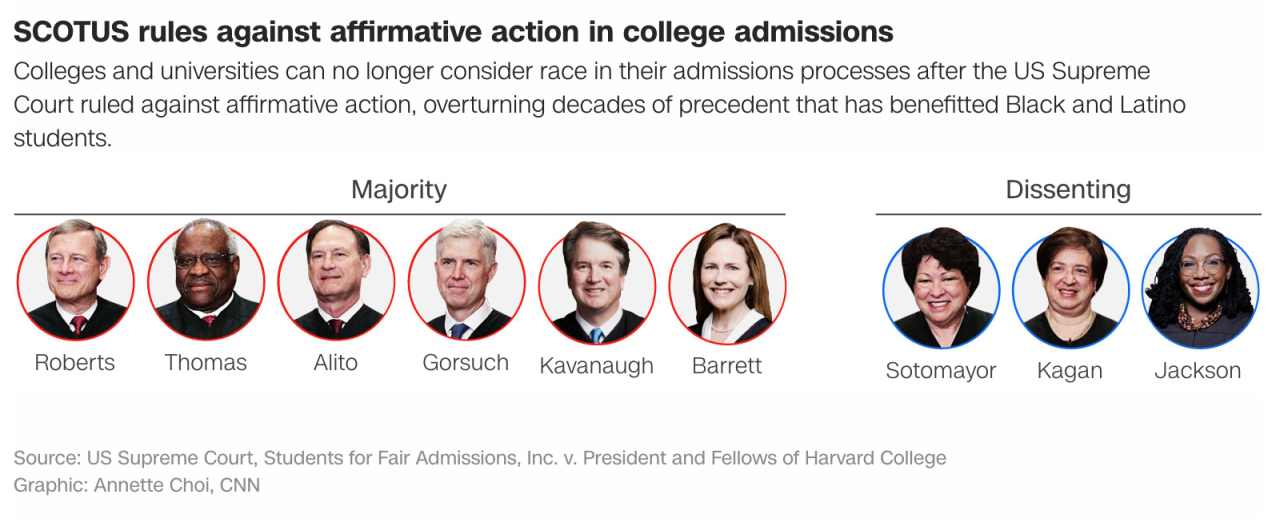
How the Supreme Court Judges voted. Credit: CNN
Perhaps the most ominous end result of this racial stereotyping is the way it successfully pits Black and Asian communities against each other. The racist discourse around affirmative action teaches Asian students that they’re being disadvantaged in college admissions in favour of Black students. As such, the myth of the model minority – who plays by the rules and has pulled themselves up by the bootstraps – has made many Asian Americans complicit in white supremacy’s strategy of anti-Blackness masked as fairness.
Yukong Zhao, president of the Asian American Coalition for Education after the ruling, told the BBC that “Today is a great day for Asian Americans and all Americans, this decision will preserve meritocracy, which is the bedrock of the American dream.”
Zhao seems to be grasping at something that simply doesn’t exist. American meritocracy is a pipedream that was crafted by the powerful to excuse their role in inequity. Work hard and you can have anything you want. But what they actually really mean to say is: ignore all the socio-political realities that make life harder for some people, so we don’t have to talk about what makes it easier for others. Or how are the two inextricably linked?
Another point to consider is, if all this was really about people earning their place, why is race the only factor being scapegoated? Of a truth, legacy admissions, donor admissions, athlete scholarships and other forms of admissions preferences are affirmative action and some of the most effective kinds around. Harvard University for instance has the majority of its white students as athletes, have alumni parents or sponsors, have donor parents or are children of Harvard employees. According to an ARP poll, only 57% of Harvard’s white students had gotten in on merit. Yet somehow the court decides that that same school doesn’t need to be intentional about diversity? Sounds ridiculous right?
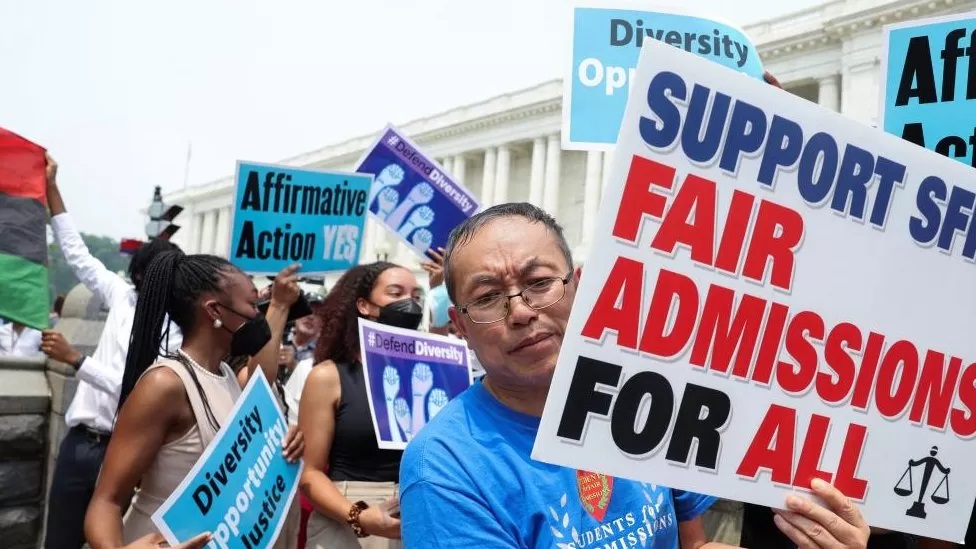
Demonstrators outside the Supreme Court before the ruling. Credit- BBC
The decision of the apex court is likely to cause ripples throughout the country, and not just in higher education, but in selective primary and secondary schools like Boston Latin in Massachusetts, Thomas Jefferson high school in Virginia, and Bronx High School of Science in New York. Ultimately, effects will be felt in every aspect of the nation’s economic, educational, and social life–from the Rooney rule that requires a minority applicant be considered in all NFL coach hiring decisions to employment and promotion decisions, DEI programs in schools and workplaces, and much more.
This in all honesty seems like a ruling that will be fought for the next forty years.
For decades, the basis of the Supreme Court’s justification for blessing affirmative action was “the educational benefits that flow from a diverse student body”. Although admissions officers were barred from using racial quotas to diversify their classrooms, they could use race as a “plus factor”—one consideration among many that could give black or Hispanic applicants an advantage over similarly qualified students who were not members of disadvantaged minorities. Chief Justice Roberts assailed this compromise. The benefits Harvard and the University of North Carolina claim for their admissions tips—“training future leaders in the public and private sectors”, “promoting the robust exchange of ideas”, “preparing graduates to ‘adapt to an increasingly pluralistic society’”—are neither concrete or measurable, he found. “Even if these goals could somehow be measured”, Chief Justice Roberts asked, “how is a court to know when they have been reached, and when the perilous remedy of racial preferences may cease?”
Truly, this wouldn’t be an American story if the people who worked to throttle affirmative action weren’t also the ones benefiting from it the most. And no one has seen more gains from anti-discrimination legislation (both in and outside college admissions) than white women. White women have made much further social progress than any other minority group since the words affirmative action were first placed within the law in 1935, yet they remain some of its strongest opponents.
Justice Clarence Thomas, who has long been opposed to affirmative action and wrote that it was “patently unconstitutional”, is a beneficiary himself. He was happy to be accepted into and attend Yale when the school joined the affirmative action movement in the 70s, and was seeking out Black students to make up about 10% of its incoming class. Talk about a glaring case of hypocrisy.
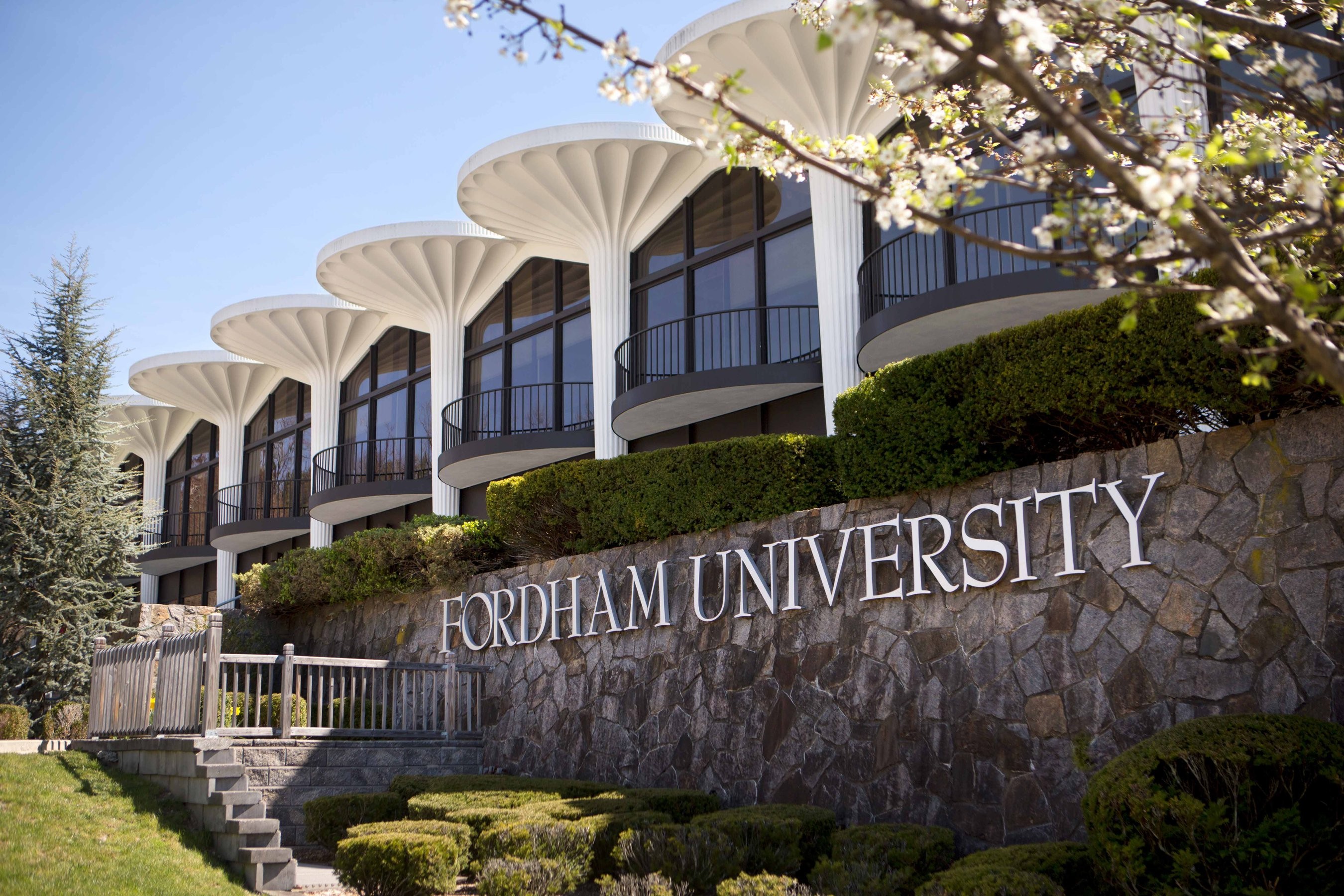
Fordham University, a Jesuit institution in the Bronx, N.Y., has defended affirmative action in college admissions as a moral imperative and critical tool for building a diverse student body. Credit-ABC News
Unsparing dissents from Justices Sonia Sotomayor and Ketanji Brown Jackson (who both joined the other’s writing, and who are each joined by Justice Elena Kagan) accused the majority of abandoning a tool that has helped bring more inclusivity and equality to higher education and to American society more broadly. The decision, Justice Sotomayor wrote, will have a “devastating impact” in “an endemically segregated society where race has always mattered and continues to matter”. In a sparring match with Justice Clarence Thomas, who wrote a 58-page concurrence, Justice Jackson insisted that race-conscious admissions policies are in keeping with the original understanding of the 14th Amendment and remain crucial tools today. Justice Thomas’s colour blind reading of that amendment, she wrote, “refuse[s] to see, much less solve for, the elephant in the room—the race-linked disparities that continue to impede achievement of our great nation’s full potential”. She tackled the glaring stupidity of ending race-based affirmative action, especially given the state of race relations in the country today.
“Although formal race-linked legal barriers are gone, race still matters to the lived experiences of all Americans in innumerable ways, and today’s ruling makes things worse, not better,” she wrote.
And if the future state of higher education wasn’t depressing enough, we can’t forget the big picture. The decision about affirmative action comes amid a gradual rolling back of several laws that protect society’s most vulnerable people, including abortion rights, gun safety laws, voting rights and even no-fault divorces.
With the recent rulings of the Supreme Court on various salient issues, it seems these thoughtless and mind boggling rulings are no longer an anomaly, they seem to be a bitter taste of what is to come.





